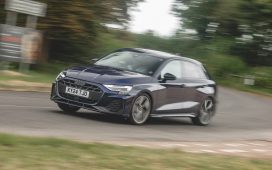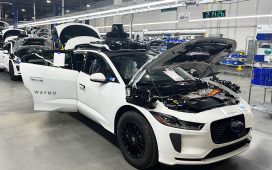Homicides were increasing and car theft rates were skyrocketing.
It was so bad, even the chief’s unmarked, black Crown Victoria was swiped. An empty parking spot was all he found as he and his wife tried to go to church one Sunday morning.
Is the surge in crime rates and mood in D.C. today a flashback? The numbers are up. The suspects are young. And we’re seeing an increase in carjackings — a distinct and more violent crime that rose from 140 reported incidents in 2018 to 485 last year.
On Sunday, a 12-year-old boy with a gun was arrested in connection with an attempted carjacking that occurred on a sunny afternoon in the Anacostia neighborhood of Southeast Washington, D.C. police said. Another 12-year-old was linked to nine carjackings this spring.
In 2001, D.C. had 7,760 cars stolen, according to police. The numbers held steady for several years, then fluctuated. There were 2,205 vehicles reported stolen last year, and 4,716 already stolen this year, according to D.C. crime data.
“Without a doubt, it’s the next generation,” said a retired D.C. police officer who was a legend on the streets back then and spoke on the condition of anonymity now to protect his privacy. He stays in touch with some of the guys on the force, who he said are locking up the children of the car thieves he chased down at the turn of the century.
I rode with him on patrol when I was a police reporter and he was the undisputed authority on car thieves. He knew which plates and makes to look for, which alleys and park gullies were the favorite ditching grounds of joyriders.
A screwdriver, a shaved-down key and usually one or two phone books — to sit on so they could see over the steering wheel — were the calling cards of the kids pushing auto theft rates to record highs.
They called themselves “UUV boyz,” a nod to the “unauthorized use of a vehicle” code for theft and joyriding, officials said.
“Ten. That’s about as young as I’ve locked them up. I’ll see them sitting behind the steering wheel of a car on a stack of phone books while another one is down there working the pedals,” the officer told me on that ride.
Some legislators are blaming this new wave of thieves on social media and TikTok trends. Now, they’re calling themselves Kia Boyz — kids who figured out how to start Kias using a screwdriver to pry open the steering column and a USB charger to start the engine.
They’re not finding phone books at crime scenes anymore (do kids even know what those are?), but they’re seeing reels of the thefts. You can’t blame it all on social media, though. Kids in 2003 found their own ways of showboating.
“It’s about 4 o’clock that they all start gathering up over on G Street,” Ellen Mundaray, an outspoken resident of the Benning Terrace public housing complex in Southeast, told me back then. “About 20 or 30 kids will get ready to cheer the others on, to root for them.
“The kids race the cars they stole down the street,” said Mundaray, who has since died (I would’ve loved her take on the Kia Boyz.). “And everyone is cheering them on — like it was a football game or something.”
A Cadillac Escalade, Lincoln Navigator, Dodge Intrepid — those get hollers of approval.
Today, joyriders stick to cars that are easier to steal (the retired officer said that a lot cars that start with key fobs are stolen because the driver leaves a spare in the car or keeps the key in a bowl or on a hook by the front door — close enough to let the car start remotely).
Republicans looking for talking points are homing in on these stories in D.C., making the nation’s capital a proxy for their attack on urban leadership.
A trio introduced legislation last week to overturn D.C.’s home rule, enacted by President Richard M. Nixon 50 years ago this December.
“Congress needs to reclaim its constitutional authority and make our Nation’s capital safe again,” Rep. Andrew Ogles (R-Tenn.) said in a statement about his bill to abolish the D.C. Council and mayor’s office. (Ogles is a former mayor of Maury County, which has violent crime rates — when data from all the police departments and sheriff’s offices are combined — slightly above the national average, in a state that regularly ranks among the top three for violent crime rates in the nation, according to FBI data.)
Here’s the perspective they’re missing.
Violent crime stats in D.C., even as they rise, remain half of what they were during the worst of the nation’s crack epidemic in the 1990s. And some of that can be attributed to hyperlocal focus and legislation.
In the 1980s, D.C. created the Youth Rehabilitation Act, which aimed to end the prison pipeline of kids who got into trouble. In some cases it worked and crime rates fell. In others, as we revealed in a searing, in-depth series in 2016, young repeat offenders were released and responsible for waves of mayhem.
That’s the stuff that frustrated the retired officer I spoke with, who hated lax enforcement by federal prosecutors who weren’t local.
“When it’s a federal court,” he said, “they’re not beholden to the citizens of D.C.”
The council recently made adjustments to the youth act and passed emergency legislation sponsored by Council member Brooke Pinto (D-Ward 2) to address the revolving-door issue, making it easier to detain people charged with violent crimes pending trial.
D.C. needs to retain the power to do this. Federal intervention has never been the answer for any city. Even Nixon knew that.









